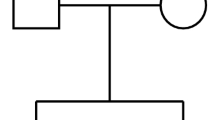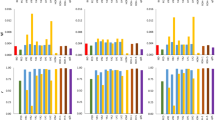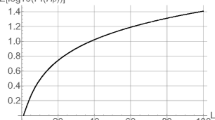Abstract
In this paper we describe a simple algorithm to decompose both inbreeding and coancestry coefficients. The decomposition is performed in pieces coming from each ancestor, including the founders and the Mendelian sampling terms of non-founders. The original algorithm presented here replaces the conventional tabular method formulae with an original set of recursive formulas. We illustrate the procedure with two small examples, including the pedigree of the bull Comet. The procedure was also tested with simulated pedigrees and it succeeded in analyzing the impact of successive bottlenecks into the average coancestry of the current cohort. Finally, we analyzed the origin of the current coancestry of the Asian Wild Horse population. The average coancestry of the current cohort was around 0.17 and the most relevant ancestors were the direct descendants of Woburn/7 and Mongolia/0, which converged in the Askania reintroduced population in Ukraine after surviving World War II.





Similar content being viewed by others
References
Ballou JD (1994) Population biology. In: Boyd L, Houpt DA (eds) Przewalski’s horse: the history and biology of an endangered species. State University of New York press, New York, pp 93–114
Boichard D, Maignel L, Verrier E (1997) The value of using probabilities of gene origin to measure genetic variability in a population. Genet Sel Evol 29:5–23
Bouman I, Bouman J (1994) The history of the Przewalski’s horse. In: Boyd L, Houpt DA (eds) Przewalski’s horse: the history and biology of an endangered species. State University of New York press, New York, pp 5–38
Caballero A, Toro M (2000) Interrelations between effective population size and other pedigree tools for the management of conserved populations. Genet Res 75:331–343
Caballero A, Toro M (2002) Analysis of genetic diversity for the management of conserved subdivided populations. Conserv Genet 3:289–299
Chang L, Fernando RL, Grossman M (1991) On the principle underlying the tabular method to compute coancestry. Theor Appl Genet 81:233–238
Colleau JJ, Sargolzaei M (2008) A proximal decomposition of inbreeding, coancestry and contributions. Genet Res Camb 90:191–198
Cruden D (1949) The computation of inbreeding coefficients for closed populations. J Hered 40:248–251
Emik LO, Terrill CE (1949) Systematic procedures for calculating inbreeding coefficients. J Hered 40:51–55
García-Cortés LA, Martínez-Ávila JC, Toro MA (2008) Partition of the genetic trend to validate multiple selection decisions. Animal 2:821–824
Geyer CJ, Thompson EA (1988) Gene survival in the Asian wild horse (Equus przewalskii): I. Dependence of gene survival in the Calgary breeding group pedigree. Zoo biol 7:313–327
Geyer CJ, Thompson EA, Ryder OA (1989) Gene survival in the Asian wild horse (Equus przewalskii): II. Gene survival in the whole population, in subgroups, and through history. Zoo biol 8:313–329
Gulisija D, Gianola D, Weigel KA, Toro MA (2006) Between-founder heterogeneity in inbreeding depression for production in Jersey cows. Livest Sci 104:244–253
James JW, McBride G (1958) The spread of genes by natural and artificial selection in a closed poultry flock. J Genet 56:55–62
Lacy RC (1989) Analysis of founder representation in pedigrees—founder equivalents and founder genome equivalents. Zoo Biol 8:111–123
Lacy RC (1997) Errata. Evolution 51:1025
Lacy RC, Alaks G, Walsh A (1996) Hierarchical analysis of inbreeding depression in Peromyscus polionotus. Evolution 50:2187–2200
Li FHF, Roderick TH (1970) Computer calculation of Wright’s inbreeding coefficient by Cruden’s method. J Hered 61:37–38
MacCluer JW, VandeBerg JL, Read B, Ryder OA (1986) Pedigree analysis by computer simulation. Zoo Biol 5:147–160
Malécot G (1948) Les mathematiques de l’heredité. Masson, Paris
Rodrigañez J, Toro MA, Rodriguez MC, Silió L (1998) Effect of founder allele survival and inbreeding depression on litter size in a closed line of large white pigs. Anim Sci 67:573–582
Rostron J (1978) On the computation of inbreeding coefficients. Ann Human Genet 41:469–475
Volf J (1994) The studbook. In: Boyd L, Houpt DA (eds) Przewalski’s horse: the history and biology of an endangered species. State University of New York press, New York, pp 61–73
Wright S (1922) Coefficients of inbreeding and relationship. Am Nat 56:330–338
Wright S (1934) The methods of path coefficients. Ann Math Stat 5:161–215
Wright S (1938) Size of population and breeding structure in relation to evolution. Science 87:430–431
Acknowledgment
This work was financed by the Spanish Plan Nacional I+D+I (grant CGL2006-13455-C02).
Author information
Authors and Affiliations
Corresponding author
Appendix
Appendix
In this appendix, we will analyze the relationship between the conventional formula for self-coancestry (Eq. 2) and that one proposed in this paper, that is \( \Phi_{ii} = \frac{1}{2}\left( {\Phi_{is} + \Phi_{id} } \right) + \delta_{ii} . \) We will distinguish tree cases depending on the knowledge about the parents.
Both parents are known
In this case, we will demonstrate that \( \Phi_{ii} = \frac{1}{2}\left( {1 + \Phi_{sd} } \right) \) agrees with \( \Phi_{ii} = \frac{1}{2}\left( {\Phi_{is} + \Phi_{id} } \right) + \frac{1}{8}\left( {1 - f_{s} } \right) + \frac{1}{8}\left( {1 - f_{d} } \right). \)
Starting from the first equation
and
From Eq. 1, the coancestry between the individual i and its parents is \( \Phi_{is} = \frac{1}{2}\left( {\Phi_{ss} + \Phi_{sd} } \right) \) and \( \Phi_{id} = \frac{1}{2}\left( {\Phi_{dd} + \Phi_{sd} } \right) \). Replacing them into 6 we have
After the definition of inbreeding as coancestry between the parents, we can write the self-coancestry of s and d as \( \Phi_{ss} = \frac{1}{2}\left( {1 + f_{s} } \right) \) and \( \Phi_{dd} = \frac{1}{2}\left( {1 + f_{d} } \right) \) respectively and then the demonstration follows trivially by considering \( 1 - \Phi_{ss} = \frac{1}{2}\left( {1 - f_{s} } \right) \) and \( 1 - \Phi_{dd} = \frac{1}{2}\left( {1 - f_{d} } \right) \), namely
and
One parent known
In this case, the self-coancestry is always 1/2 because of the lack of coancestry between the ancestors, but δ ii will depend on the inbreeding of the known ancestor, as in the previous case. Now, \( \Phi_{ii} = \frac{1}{2}\Phi_{ik} + \frac{1}{4} + \frac{1}{8}\left( {1 - f_{k} } \right), \) where k denotes the known parent, either s or d.
The demonstration is pretty similar to the previous one. Starting from equation \( \Phi_{ii} = \frac{1}{2}\left( {1 + \Phi_{sd} } \right) \) with null Φ sd
and
Then, applying Eq. 1 to the coancestry between the individual i and the known ancestor, \( \Phi_{ik} = \frac{1}{2}\Phi_{kk} , \)
And finally, applying the definition of the inbreeding as before
and
completes the proof.
The third case is straightforward, that is, when both parents are unknown δ ii = 1/2.
Rights and permissions
About this article
Cite this article
García-Cortés, L.A., Martínez-Ávila, J.C. & Toro, M.A. Fine decomposition of the inbreeding and the coancestry coefficients by using the tabular method. Conserv Genet 11, 1945–1952 (2010). https://doi.org/10.1007/s10592-010-0084-x
Received:
Accepted:
Published:
Issue Date:
DOI: https://doi.org/10.1007/s10592-010-0084-x




